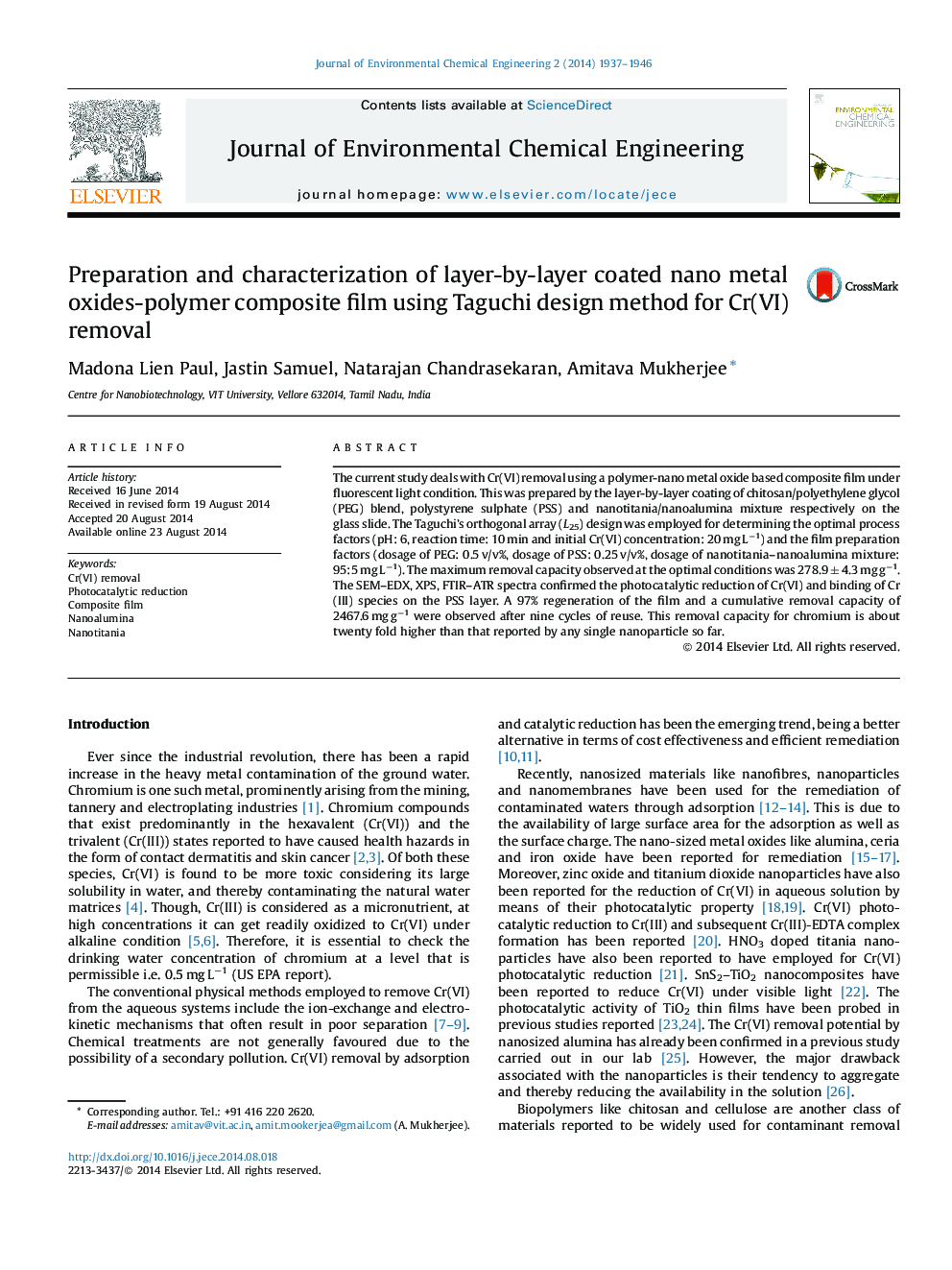| کد مقاله | کد نشریه | سال انتشار | مقاله انگلیسی | نسخه تمام متن |
|---|---|---|---|---|
| 221802 | 464266 | 2014 | 10 صفحه PDF | دانلود رایگان |

• A novel composite based on chitosan supported nano-alumina/nano-titania mixture.
• Adsorption coupled photo catalytic reduction of Cr(VI) under fluorescent light.
• A very high cumulative removal capacity of 2467.6 mg g−1 with nine cycles of reuse.
• Rapid removal with 97.3% efficiency observed within 10 min of reaction.
The current study deals with Cr(VI) removal using a polymer-nano metal oxide based composite film under fluorescent light condition. This was prepared by the layer-by-layer coating of chitosan/polyethylene glycol (PEG) blend, polystyrene sulphate (PSS) and nanotitania/nanoalumina mixture respectively on the glass slide. The Taguchi’s orthogonal array (L25) design was employed for determining the optimal process factors (pH: 6, reaction time: 10 min and initial Cr(VI) concentration: 20 mg L−1) and the film preparation factors (dosage of PEG: 0.5 v/v%, dosage of PSS: 0.25 v/v%, dosage of nanotitania–nanoalumina mixture: 95:5 mg L−1). The maximum removal capacity observed at the optimal conditions was 278.9 ± 4.3 mg g−1. The SEM–EDX, XPS, FTIR–ATR spectra confirmed the photocatalytic reduction of Cr(VI) and binding of Cr(III) species on the PSS layer. A 97% regeneration of the film and a cumulative removal capacity of 2467.6 mg g−1 were observed after nine cycles of reuse. This removal capacity for chromium is about twenty fold higher than that reported by any single nanoparticle so far.
Journal: Journal of Environmental Chemical Engineering - Volume 2, Issue 4, December 2014, Pages 1937–1946